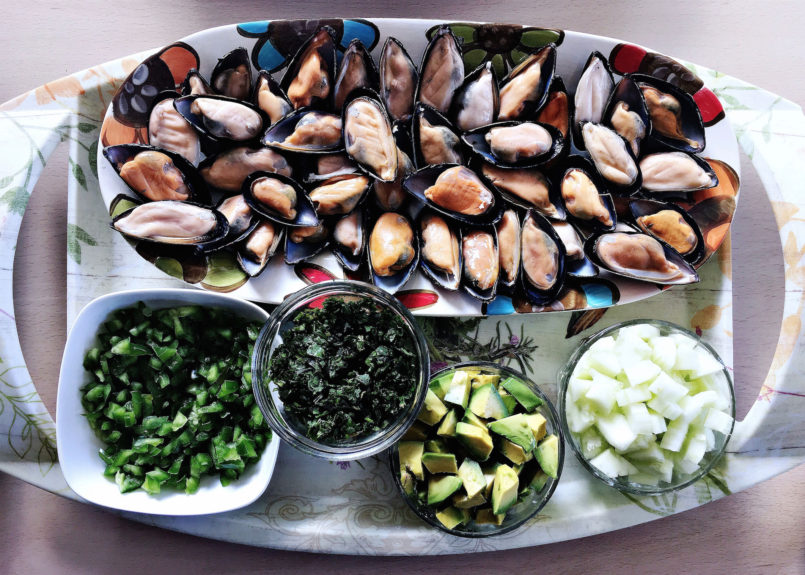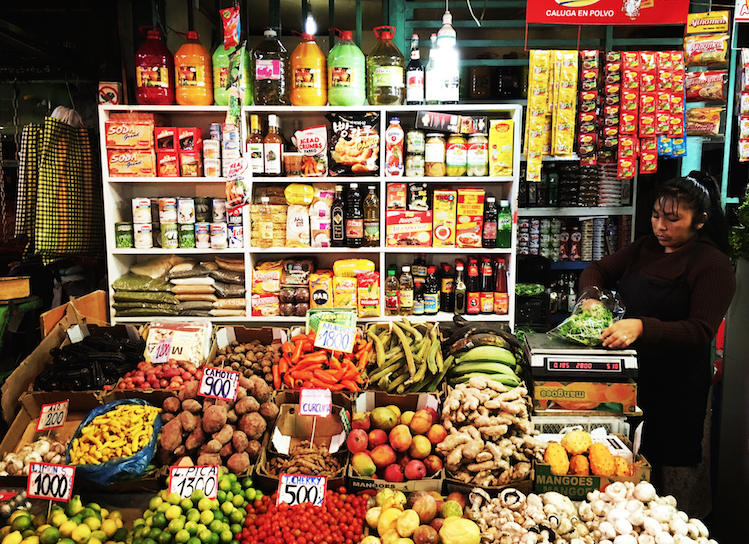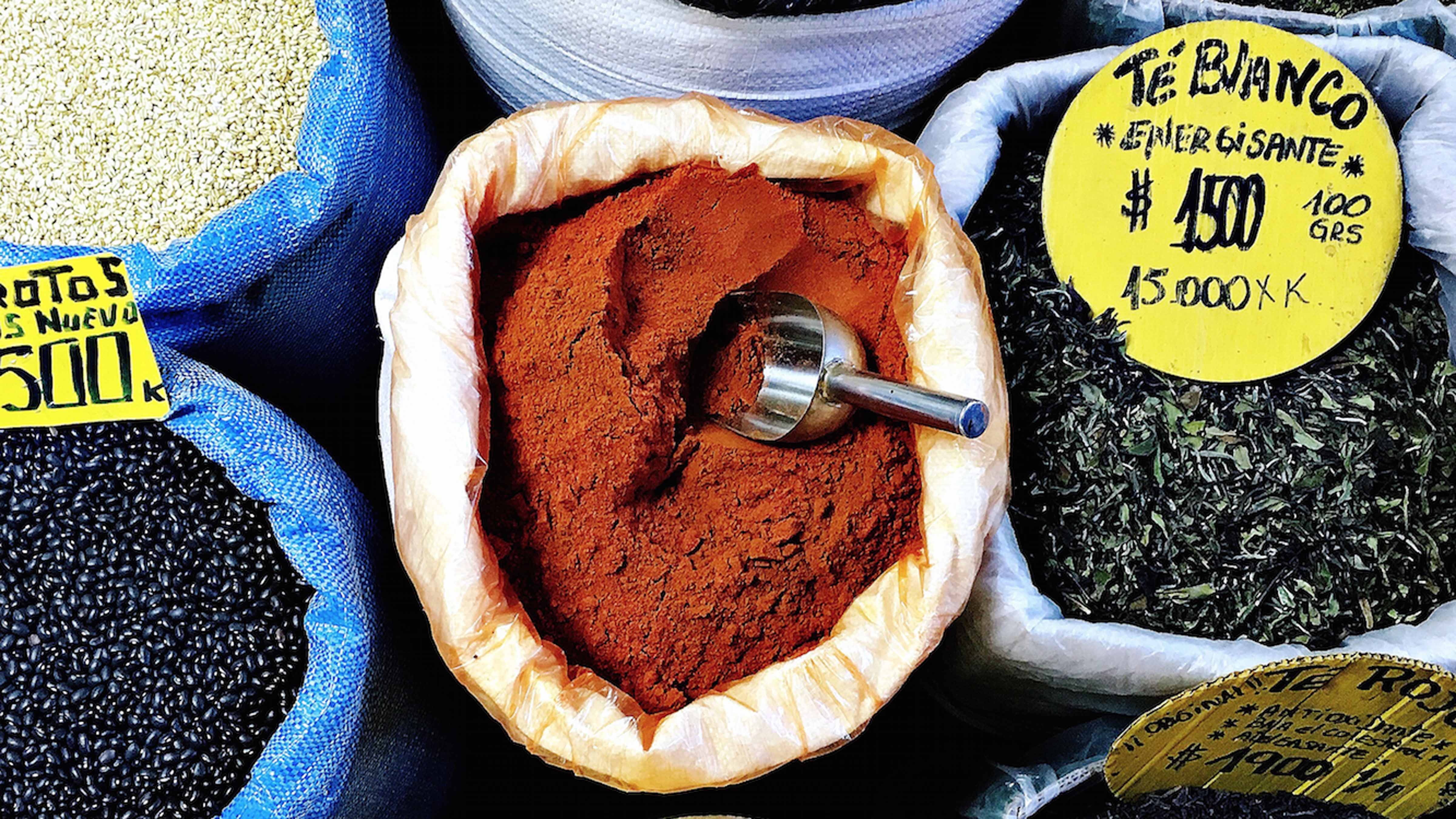I’m standing by Pablo Neruda’s bar. Unsurprisingly, it’s as mind-bending as his surrealist poetry—decorated with a stuffed penguin, carved wooden fish, antique glassware, a hand sculpture, a vintage seltzer bottle, and a sign reading “Don Pablo Est Ici,” along with many other oddities and curiosities. Neruda was the only person allowed behind it. He liked to play bartender, preparing his signature cocktail, the Coquetelón. A buzzy blend of orange juice, dry champagne, Cointreau, and cognac, he served it over crushed ice in a chilled champagne flute. Apparently, it could be quite deadly. It turns out Neruda wasn’t just a Nobel Prize–winning poet; he was also the gifter of monstrous hangovers.
His small saloon is hidden away at the back of the third floor of his onetime home, La Sebastiana, perched on the hills of Valparaíso, Chile, with a sublime view of the harbor and the Pacific. As I’ve learned on my short, self-guided tour of the five-story wonderland, the poet—who died in 1973—loved food, writing odes to onions, artichokes, oranges, and the “large tuna in the market.” This makes it a fitting starting point for my trip through the writer’s homeland, which I’m undertaking with a fellow DCist, the celebrated chef Victor Albisu, who owns the South American steakhouse Del Campo in Washington, DC’s Penn Quarter, as well as a pair of Taco Bamba taquerias in nearby Virginia.
Over the course of this week in early April—which is autumn on the bottom half of the world—we are aiming to eat our way through the country in search of unique ingredients, products, and recipes, which Albisu hopes to utilize at his restaurants. It’s a tough job, but we’re determined to do it without snapping our belts or overdosing on Pepto. An epic tasting-menu dinner focused on Chilean ingredients, traditional cuisine, and cooking techniques at Santiago’s Amadeo Bar threatens on both counts, but we muscle through it with the kind of professionalism that will undoubtedly cause our cardiologists to wince when we tell them about it upon our return.

photo by Nevin Martell
Soon our itinerary takes us to the Colchagua Valley—a two-hour drive south of Santiago—where we stand under the watchful eye of the Andes Mountains. The sky is a brilliant blue, a marked contrast from the rich greens of the olive groves stretching around us for acres. After walking through the virdidian aisles, olive oil maker Carlos Guerrero of Diaz Guerrero gives us an intimate tasting of his farm’s varietals. A blend of Frantoio and Leccino olives is mild and restrained, while one made with Picual olives has a smooth, nutty start and a peppery finale.
Our host invites us across the road to his countryside casa for a homespun breakfast that makes for one of the most impressive meals of the trip. On his white cloth–covered dining room table, he lays out a basket of warm, coffee bean–shaped marraqueta bread, chopped mild green chiles languishing in a pool of olive oil, soft white cheese, and scrambled farm eggs as yellow as sunflowers. Pile the latter three components on a hunk of the French roll–style bread, sprinkle on some merquén—dried and smoked red chili peppers mixed with salt and other seasoning that’s used here as frequently as Americans shake on the S&P—and you have a bite that’s so satisfying you’ll never want to leave.
Next stop is an organic garden growing more than one hundred and fifty types of herbs, greens, and vegetables, including Peruvian red peppers, lemon basil, radishes, dill, lettuce, mint, and aloe. Our guide for this portion of our trip, chef Pilar Rodriguez, is there to pick up some fixings for lunch. She operates the Food & Wine Studio on the grounds of the Viu Manent vineyard, whose fields of Malbec grapes spread out around the boutique restaurant. Her food is elegant and refined, but never fussy or overly complicated. After all, when you have a natural pantry like Chile, you don’t need to do much to ingredients to make their flavors pop.

Chef Pilar Rodriguez’s smoked mussels / photo by Nevin Martell
The small, whitewashed dining room has an elevated open kitchen, its black accents brightly lit by the sunlight that pours in through the windows wrapping around three sides of the room. Albisu sets about showing Rodriguez how he dry-sears avocado at Del Campo for use in her smoked Chilean mussels dish, our first course. Ribbons of shaved cuttlefish with half moons of red onion in a punchy lemon oil is the second offering, a standout combination so memorable that Albisu will put a version of the dish on his menu when he returns home. “I loved the balance of flavors: salt, sweet, and acid,” he later tells me.
A leisurely meal unfolds over the next couple of hours, with Rodriguez, the consummate host, switching between English and Spanish as she discusses the slow, steady ascendence of her country’s culinary culture. It’s a sentiment echoed the next day by chef Rodrigo Jofré of La Mensajería back in Santiago. “The scene has grown a lot,” he says. “It has been great for chefs. People are finally paying attention.”
He’s giving us a tour of the city’s La Vega Central Market. Stalls are packed with everything from the Holy Trinity of Chilean cooking—cumin, paprika, and oregano—and a rainbow of hot sauces to pickles galore and fresh vegetables attractively stacked. From one of the vendors in the fish market, we pick up some tide-pool creatures called piures, which Jofré claims “make you fuerte [strong].”

La Vega Central Market / photo by Nevin Martell
Back at his restaurant, after the chefs share tricks and techniques in the kitchen, we try the vividly red slips of slimy flesh, which first need to be pried out of the living rock that encases them. Between their appearance and their nickname—“sea squirts”—neither Albisu nor I are very excited to eat them. To temper the strong taste of iodine, Jofré mixes them with cilantro, onion, and lemon juice, which dispel most—but not all—of their offending flavor. This treatment makes them no less slippery and slithery as they slide down our throats, though. Thankfully, this Bizarre Foods–worthy starter is followed by an onslaught of strong sangria, excellent tacos, and sweet empanadas to wipe our palates and our memories clean.
On our last day, we go to Emporio y Restaurant Melí in Frutillar, a small town on Lake Llanquihue in the southern reaches of the country. Albisu eagerly joins executive chef Claudio Ávila to help him prepare a lavish lunch featuring a multitude of Chilean ingredients, many gussied up with the house-made condiments, like mustard laced with blueberry-like maqui berries and a smoky, spicy merquén sauce. When the meal is ready, we all gather at a communal table aglow with the rays shining through the skylight above us. Albisu thanks our hosts, we all toast, and we dig in.
Biting through the fryer-kissed exterior of a quenelle-shaped papas rellanas to reveal the stewed beef and smooth whipped potato inside, I’m reminded of Neruda’s “Ode to French Fries,” in which he references the spuds’ conveyance of “the delicious simplicity of the soil.” And then the poetry fades into the background as I take another bite. FL







